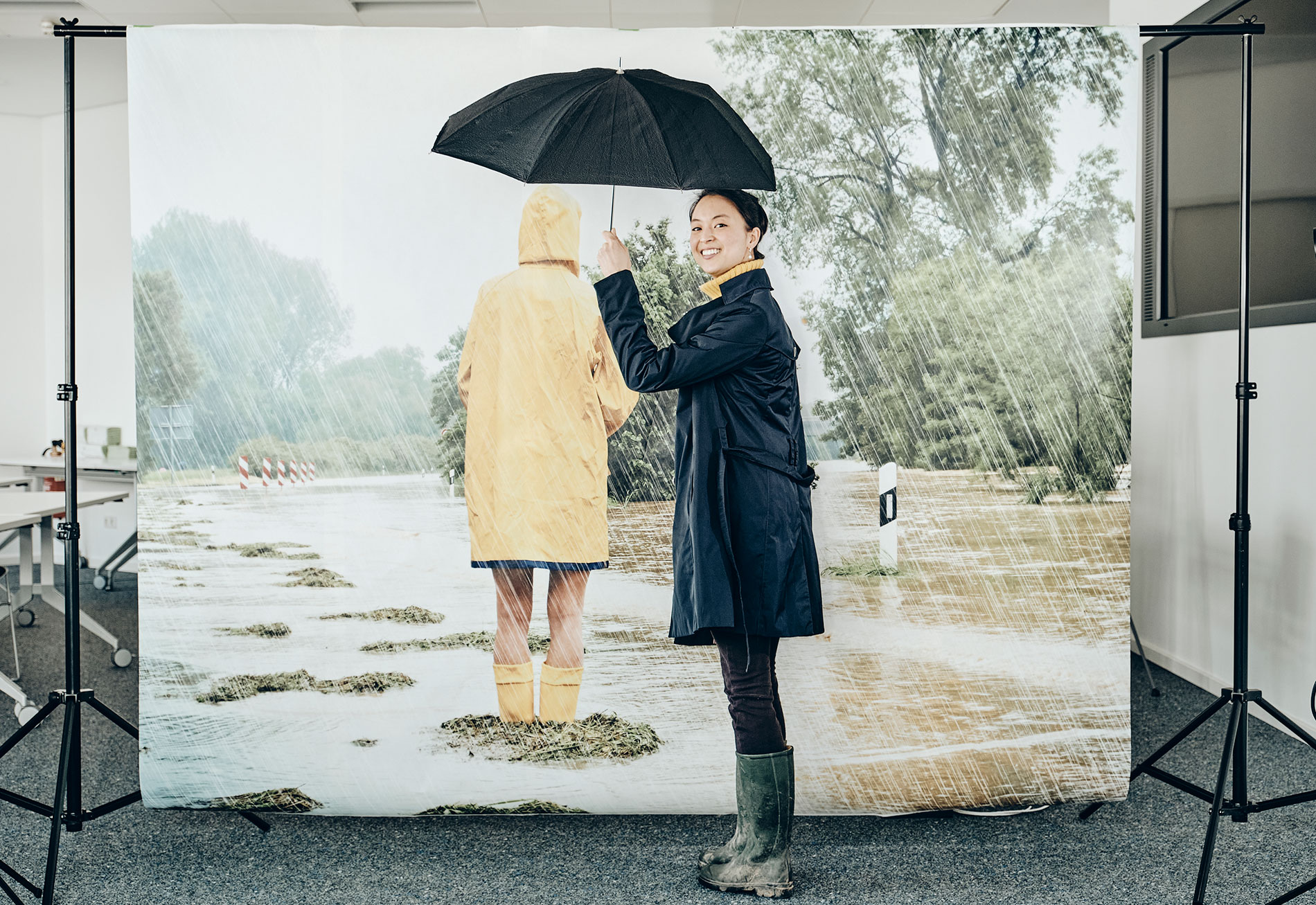Climate stress
Green roofs, green facades — and a robot tends the surfaces
Using the Abu Dhabi example, Dr. Afshin Afshari investigated the effect of green exterior walls on the urban climate in a model-based analysis. The researcher is currently establishing the “Urban Physics Modeling” working group at Fraunhofer IBP. “The study in Abu Dhabi revealed: If we were to cover all facades with plants with average foliage, the temperature rise in the city would drop by 25 percent. And by using plants with a greater density of foliage, we could almost half the heat island effect,” says Afshari. The researcher is presently working on a similar study for Berlin: This centers around the effect of greened roofs. “In Berlin, the effect is likely to be less because the city already has a lot of green areas,” presumes Afshari. However, green facades are difficult to maintain and normally require the use of scaffolding, lifting platforms or industrial climbers. In their “Green Wall Robot” feasibility study, researchers at the Fraunhofer Institute for Manufacturing Engineering and Automation IPA have devised a simpler method. “On a rail-based facade system, a robot moves fully automatically and performs all planting, tending and maintenance work — from cutting the plants to exchanging individual plant modules,” explains Kevin Bregler from Fraunhofer IPA.

“Urban Nature Labs” project
Urban green, then, is one of the primary approaches being taken to protect cities against the effects of climate change. In the “Urban Nature Labs” project, a consortium with ten cities is investigating exactly what nature-based solutions are capable of. The Fraunhofer IAO is also involved. “Some measures have already been implemented in three of the cities: in Eindhoven in the Netherlands, Tampere in Finland and Genoa in Italy,” Sophie Mok, scientist at the Fraunhofer IAO, explains. In Eindhoven, the measures are spread across the entire city: Roads and squares have been greened and equipped with underground water storages, built-up rivers have been “daylighted” and renaturated. In Tampere, two districts have been greened, including an old industrial site. Biofilters are being used to absorb harmful substances and to clean water and soil. Intensive green roofs and urban gardens have also been created. In Genoa, a former military site has been re-developed into a green area, the focus here being on drainage, flood protection and landscaping.